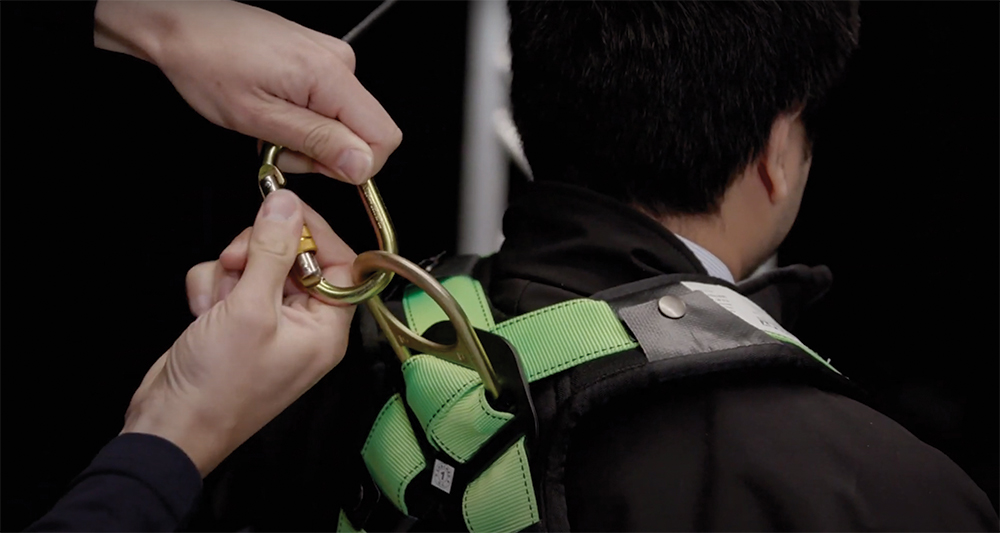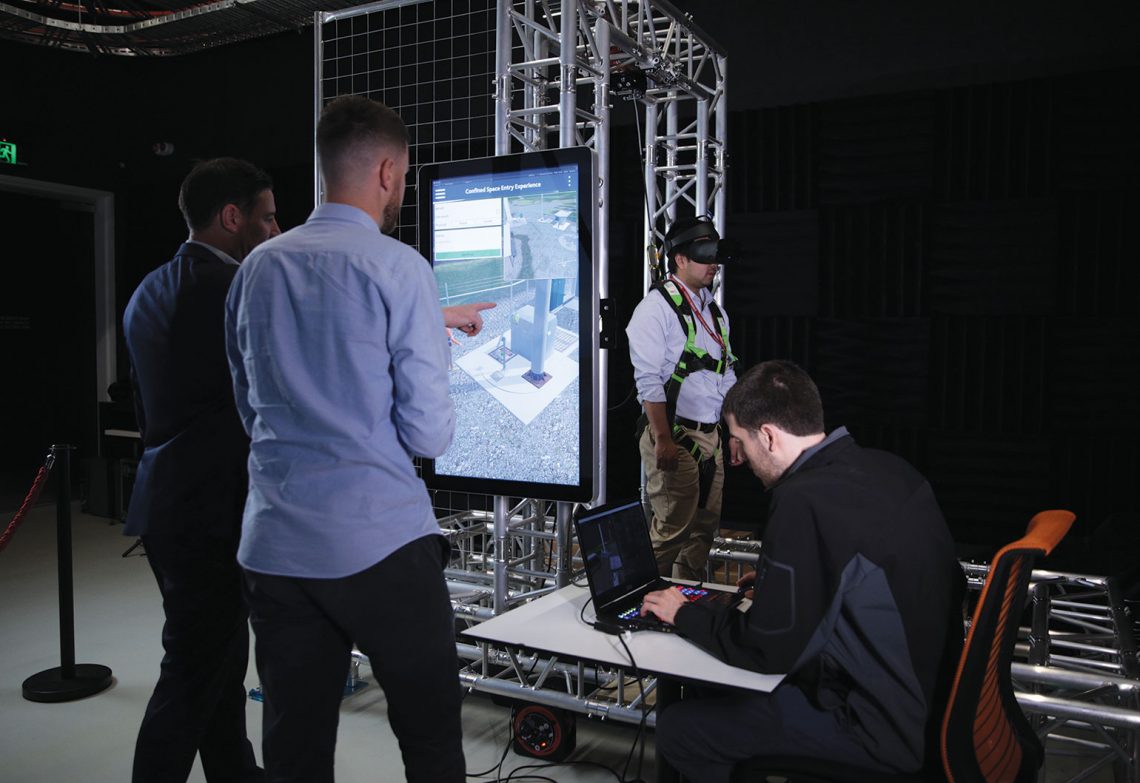Melbourne’s sewers are a dangerous place for the unprepared. A simulation readies maintenance staff to descend into their depths.
Something has gone wrong deep inside one of Melbourne’s sewers and, as an employee of Melbourne Water, you’ve been tasked with fixing the problem.
This is no ordinary job. You’re attached to a harness and lowered deep into a dark and confined space, where you navigate at the direction of a support team transmitting instructions. It’s an otherworldly experience, quite unlike any experience on the surface.

Fortunately, on this occasion, none of it is real. It has all been created by engineers at Deakin University’s CADET Virtual Reality Training and Simulation Research Lab — including the sewer-authentic smells that accompany the experience.
The Virtual Reality Confined Space Entry Simulator, as it is called, aims to transform how Melbourne Water workers are trained in the difficult and inherently dangerous task of entering sewers to conduct maintenance and repairs.
And though it is only just now being rolled out to workers, it is already attracting notice at a national level. In May, the technology was honoured with the Water Industry Safety Excellence Award at the 2021 Australian Water Awards.
“We realised to do this, we couldn’t just provide a headset with the video and audio,” Associate Professor Ben Horan told create. “We wanted to provide a really multi-sensory, immersive experience.”
As head of Deakin’s Virtual Reality Lab, Horan has been collaborating with Melbourne Water for five years to help provide a safer working environment for the utility’s staff.
“We did have a few scenarios that encouraged us to pursue this type of innovative training,” said Scott McMillan, Melbourne Water’s Manager of Safety, Health Environment and Quality Technology and Innovation.
“We went to Deakin and said we want to make training for our people more of a real-world experience for doing confined space entry.”
When it set about developing its simulator, the first thing Horan’s team did was visit the locations of the sewers it was tasked with replicating digitally.
“We visited multiple sewers and one of the pump stations — we didn’t go down ourselves; we lowered cameras down,” Horan explained.
To prepare utility workers properly, Horan wanted to create an immersive experience. That’s why the simulator also includes movement, communication and smell to create as authentic an environment as possible.
“A person wears a harness and they’re lowered down,” Horan said, explaining that, though they only descend 100 mm in reality, it feels like 30 m in the simulation.
The subject then navigates through a training scenario. A treadmill responds to their location and allows them to move about.
“It’s quite a confronting experience,” McMillan said. “The person training knows it is a simulation, but the conditions are so close to the real thing that it’s like you are working in a legitimate confined space on a complex job.”
In developing an immersive environment, the team had to consider what experiences were worth recreating — whether the trade-off between realism and complexity could be justified.

That’s where the distinctive sewer smell comes in.
“Smell is something that’s really difficult to do, but you can imagine going into the sewer, it’s really important,” Horan said.
“We can all imagine what a virtual reality headset’s like to wear. You see things, you hear things. We can imagine wearing a harness … But then smell. It’s really important in this context to make it as real as we can.”
“We want to use as many senses as we can in our projects,” McMillan said. “We’re trying to make things that make it as memorable as possible.”
The solution is, in Horan’s words, “reasonably primitive”.
“We have a fan, which not only provides, in the sewer scenario, gusts of air, but also the smell of what a sewer would be like,” Horan said. “It’s a fan that blows an odour, but it is really immersive.”
Simulating snakes in the grass
When Melbourne Water first began working with the CADET lab, the partnership focused its attention on training that would help workers who had to venture into bushland spaces.
The outcome was a virtual reality simulation that prepared staff to respond if they were bitten by a snake, complete with haptic feedback to give information about correctly applying bandages.
“You look at the bandage through your headset and you then can feel whether your pressure immobilisation technique is correct,” Horan said.
“You don’t have enough pressure or you have too much pressure, in which case, the technique’s ineffective.”
Horan said that the common thread between the snakebite treatment simulator and the Confined Space Entry Simulator is that they use virtual reality to do things regular training cannot.
“Aside from being the start of the partnership, you’ll see there’s a thread across what we do where virtual reality can let us do things that we couldn’t otherwise do,” he said.
“We’re in a research group that is looking for how these technologies best provide new innovation to different areas.”



